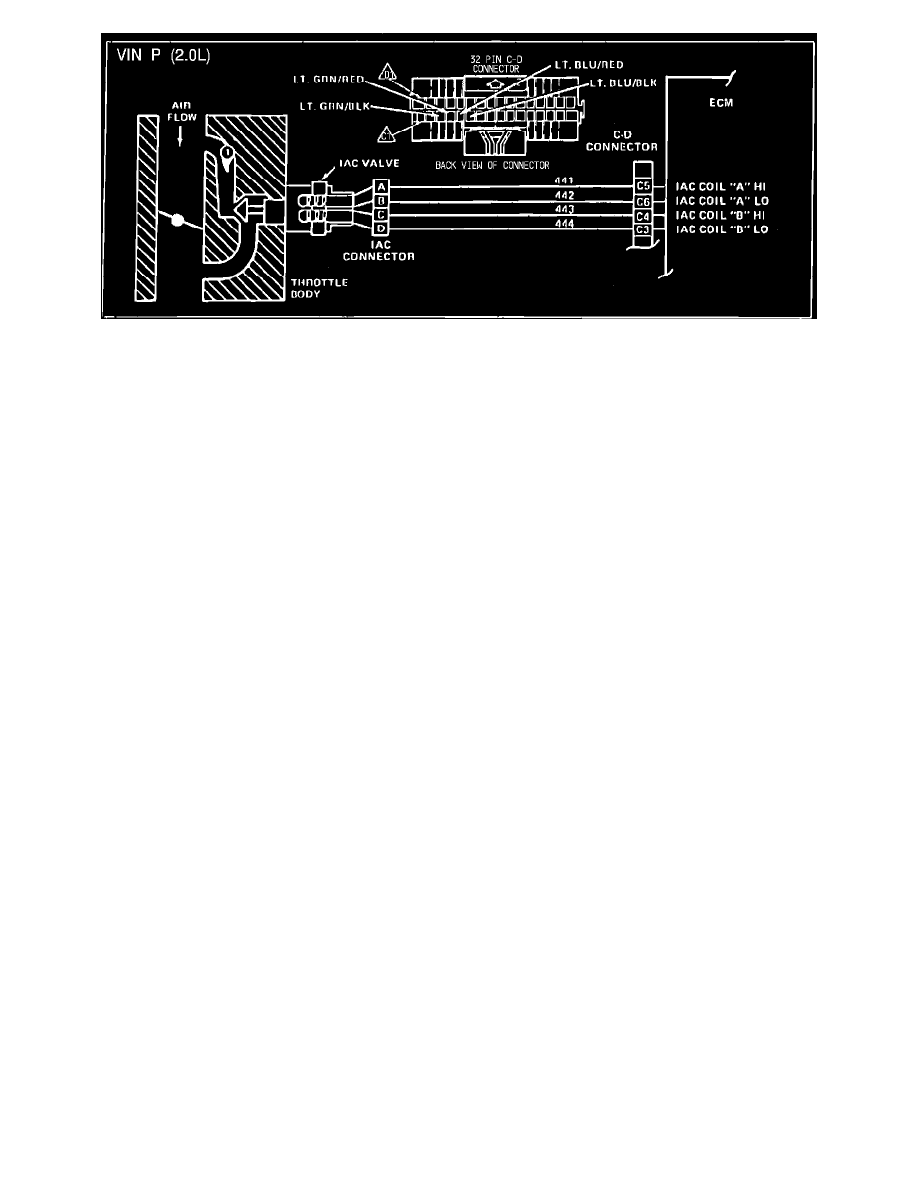Skyhawk L4-121 2.0L VIN P TBI (1984)

Fig. 029 - Wiring Diagram for Chart C-2C Idle Air Control. VIN P
CHART C-2C, IDLE AIR CONTROL
The ECM controls engine idle speed by moving the IAC valve, to control air flow around the throttle plate. It does this by sending voltage pulses
(called "counts" or "steps") to the proper motor winding. The motor shaft and valve move a given distance for each pulse received.
a.
To increase idle speed - ECM sends enough counts to retract the IAC valve and allow more air to flow, until idle speed reaches the proper RPM.
This increases the ECM counts.
b.
To decrease idle speed - ECM sends enough counts to extend the IAC valve and reduce air flow. This will reduce the ECM counts.
Each time the engine is started and vehicle speed reaches 35 to 45 M.P.H., the ECM will "reset" the IAC by sending enough counts to seat the valve.
The fully rated valve is the ECM reference Zero. A given number of counts are then issued to open the valve, and normal ECM control of IAC will
begin. The number of counts are then added by the ECM to increase idle speed, and subtracted to decrease. This is how the ECM knows what the motor
position is for a given idle speed.
The ECM uses the following information to control idle speed.
a. Battery voltage
b. Coolant Temperature
c. Throttle Position Sensor
d. Vehicle Speed Sensor
e. Manifold Absolute Pressure (vacuum)
f.
Engine Speed
NOTICE: Do not apply battery voltage across the IAC motor terminals. It will permanently damage the IAC motor windings.
1.
When the diagnostic test terminal is grounded, the ECM will pulse the IAC and cause it to extend and retract a given distance, as long as the
terminal is grounded and engine is stopped.
2.
The test light will confirm the ECM pulses by an ON/OFF or Dim/Bright indication.
3.
Before replacing an ECM, be sure to check the resistance at the IAC motor windings. Failure to do so may result in a repeat ECM failure.
4.
Engine idle can be adversely affected by the following:
a. Park/Neutral Switch - If the ECM thinks the car is always in neutral, idle speed will not be correct in drive range.
b. A leaking injector will cause poor idle quality due to excess fuel.
c. Vacuum leaks can cause higher than normal idle.
d. If minimum idle speed is found to be too high, do not attempt to adjust it until a possible vacuum leak has been corrected.
e. When the throttle shaft or throttle position sensor is binding or sticking in an open throttle position, the ECM does not know if the vehicle has
stopped, and does not control idle.
f.
In addition to electrical control of EGR, be sure to examine the EGR valve for proper seating.
g. Faulty battery cables can result in voltage variations. The ECM will try to compensate, which results in erratic idle speeds.
h. The ECM will compensate for power steering loads. Loss of this signal would be most noticeable when parking.
i.
System voltage will effect idle if below 9 or above 16 volts.
